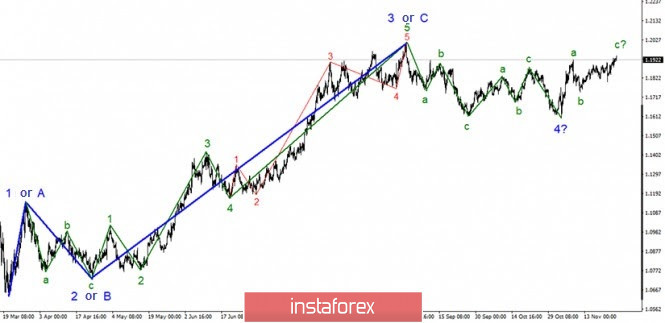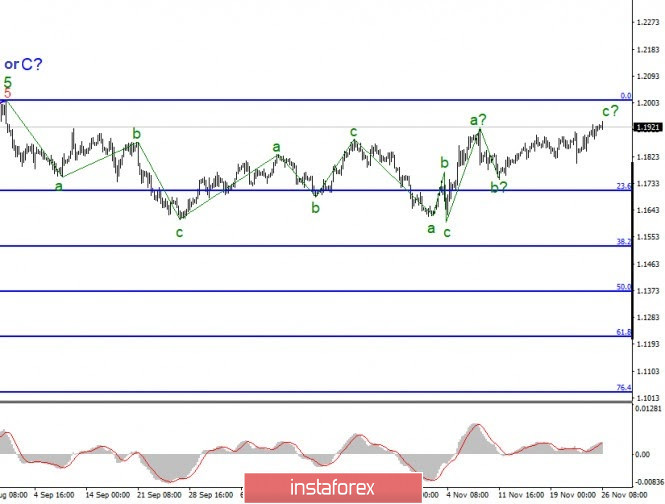

A smaller-scale wave marking also indicates that the next three-wave section of the trend is still being built. It is also possible that the upward section of the trend within the global wave 5 has resumed, as I mentioned earlier. However, at this time, the section of the trend that originates on November 4 does not look like an impulse wave 5 at all. Thus, I am inclined to the option with further alternating triples up and down.
Over the past day, the US currency has lost 27 points. Although the construction of an upward section of the trend continues, I can't say that the increase is strong, and the trend section is impulsive. The current wave marking and the general type of instrument movements are very eloquent – the lack of a clear trend. Thus, I cannot conclude that the news background has a strong influence on the instrument and the mood of the markets. For example, last night, the Fed minutes were published. Usually, this document is a summary of the last meeting and it rarely "pops up" interesting information. Yesterday, the document spoke about the concern of members of the Fed's monetary committee about the high number of cases of coronavirus in the United States. After all, the epidemic itself carries high risks for any economy. It is logical to assume that the stronger the epidemic, the higher the risks. The Fed is also quite concerned about the pace of labor market recovery. Let me remind you that the latest report on applications for unemployment benefits was not as optimistic as the previous ones, and showed that the rate of decline in the number of unemployed after the huge values in the spring of 2020 is slowing down. And given the number of COVID cases in recent weeks, they may start to grow again.
Also, America released a report on GDP for the third quarter of 2020, which was not much different from previous publications, and a report on orders for durable goods, which even turned out to be better than the markets expected. However, the US dollar failed to extract a profit from this package of statistics. The moderate decline continued and continues today, on Thursday. However, the current wave layout allows for the completion of wave C construction in the near future. Thus, it is possible that the tool will not reach the 20th figure and will again rush to the 17th figure or slightly lower.
General conclusions and recommendations:
The euro/dollar pair is expected to continue building a three-wave upward trend section, however, it may be completed in the near future. Thus, now I recommend that you be very careful when buying a tool and start looking at its sales. An unsuccessful attempt to break through the 0.0% Fibonacci level will indicate that the markets are not ready for further purchases of the euro.
 English
English 
 Русский
Русский Bahasa Indonesia
Bahasa Indonesia Bahasa Malay
Bahasa Malay ไทย
ไทย Español
Español Deutsch
Deutsch Български
Български Français
Français Tiếng Việt
Tiếng Việt 中文
中文 বাংলা
বাংলা हिन्दी
हिन्दी Čeština
Čeština Українська
Українська Română
Română

